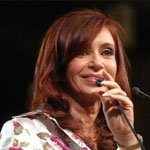Almost 100 days after becoming the first woman ever elected President of Argentina, Cristina Fernández de Kirchner has little to show so far for her approach to managing the government. Experts interviewed by Universia-Knowledge at Wharton say that, as they expected, her administration is a continuation of the previous administration in which her husband Néstor Kirchner was President. Néstor has not removed himself entirely from power. Positive economic data support a continuation of the current situation. However, in the short and medium term, several problems must be resolved: Inflation, the crisis in the INDEC (National Institute of Statistics and the Census), government subsidies, the energy crisis and Argentina’s international ties with distant lands.

Sign up to stay informed about our latest article releases.